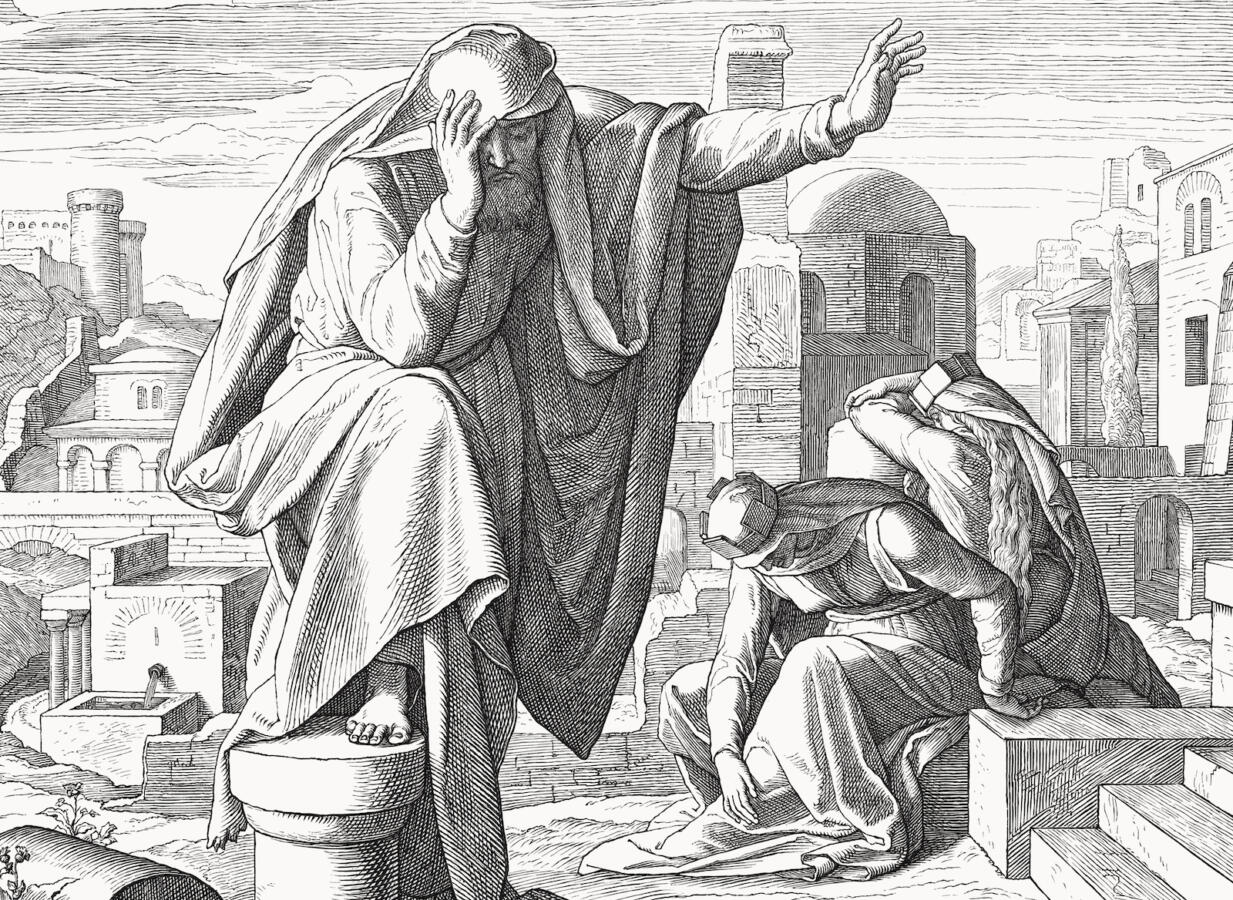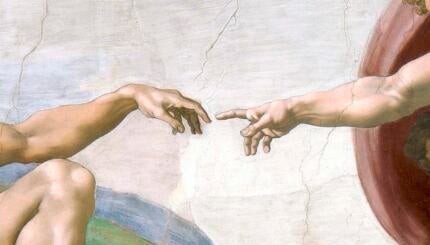This coming Thursday is Tisha B’Av, the day on which Jews traditionally commemorate the destruction of the two ancient Temples with fasting and other modes of self-denial. The goal of these rituals is to induce a mindset of mourning in an attempt to appreciate what was lost with the destruction of the Temple.
Let’s be honest: This isn’t easy. The animal sacrifice practiced in the Temple would be regarded today as, at the very least, countercultural. And Jewish sovereignty has returned to Jerusalem, undoing the millennia of exile initiated by the Babylonian and Roman armies that destroyed Jerusalem.
If we want to achieve empathy, to feel what ancient Jews might have felt with the destruction of the Temple, we have to use historical texts to channel their experiences. This is the objective of the traditional liturgies read on Tisha B’Av — particularly Eicha, the Book of Lamentations, which describes the horrors of the destruction in vivid detail. In the talmudic period, the practice arose of reciting additional laments known as Kinot, which poetically render the destruction of the Temple and a variety of other historic Jewish catastrophes.
But these are only the best-known examples of this genre. Two lesser-known but deeply poignant passages offer additional doorways into the Jewish mindset in the decades following the destruction of the Second Temple in 70 CE. Unlike Eicha and Kinot, these accounts have an apocalyptic tone, emphasizing that life itself is no longer worth living after the destruction, which makes them particularly affecting.
With your help, My Jewish Learning can provide endless opportunities for learning, connection and discovery.
Consider this passage from Second Baruch, likely composed around 100 CE in Judea, in which a character known as Baruch ascends the Temple Mount and laments.
You, farmers, do not sow again.
And you, earth, why do you give the fruits of your produce?
Hold the sweetness of your sustenance within you.
And you, vine, why do you continue to give your wine?
An offering will no longer be made from it in Zion,
nor will first fruits again be offered.
And you, heaven, hold your dew,
and do not open the reservoirs of rain.
And you, sun, hold the light of your rays,
and you, moon, extinguish the abundance of your light,
for why should light rise again
where the light of Zion is darkened?
And you, bridegrooms, do not enter,
and do not let the virgins adorn themselves with crowns.
And you, women, do not pray that you may bear,
because the barren will rejoice more.
Those who have no children will be glad,
while those who have children will be grieved.
In a similar vein, Tosefta Sotah, a work of classical rabbinic literature redacted around 200 CE but reflecting earlier traditions, offers these teachings:
Rabbi Ishmael said: From the day that the Temple was destroyed, it would have been proper not to eat meat or drink wine, except that the court cannot decree on the public matters that they cannot withstand.
He would say: Since they are uprooting the Torah from among us, we should decree upon the world that it be desolate, that one not marry a woman or have children or have “son’s week” celebrations, until the seed of Abraham will disappear on its own.
Both these sources reflect a deep-seated sense of despair, an inability to imagine a world without a Temple. Both texts call upon nature to stop its course and for people to stop marrying, procreating and celebrating life. Life is so painful, so inconceivable without the Temple, that the only reasonable approach is for the world to literally end, to stop producing food or procreating “until the seed of Abraham will disappear on its own.” If the world won’t disappear, at least the Jewish people will.
Some of us may relate to a distress so extreme it robs us of the will to live, where even the normal functioning of nature feels like an affront. But for many of us, inhabiting this kind of mindset is challenging. The best we may be able to do is attempt to appreciate why the loss of the Temple was such a cataclysmic loss.
The Temple was both the religious and political center of Jewish life and thus the preeminent symbol of Judaism itself. Its loss represented an absolute reversal of Jewish life, which was organized around the Temple in major ways. Not only did the priests offer sacrifices there on behalf of Israel, but the priesthood took on major political roles as well, with the high priest serving as the de facto ruler of the Jews. Pilgrimages to the Temple on major holidays brought together Jews from across the Roman Empire. And the Temple’s very existence afforded the sense that biblical rites were being followed, that things were as they should be.
Imagine if someone destroyed your synagogue, but also eradicated the sovereignty of the government under which you lived, with no obvious alternative for either. Consider the implications not only for your theology and your worldview, but for your morale. This is how Judeans must have felt after the Temple, as we see all too vividly in the depictions above.
Whether through the accounts of Baruch or the teaching of Rabbi Ishmael or the imagination we can muster from an understanding of what the Temple meant to ancient Jewry, this Tisha B’Av, let us try to experience for ourselves the magnitude of such an overriding loss.
This article initially appeared in My Jewish Learning’s Shabbat newsletter Recharge on July 22, 2023. To sign up to receive Recharge each week in your inbox, click here.



